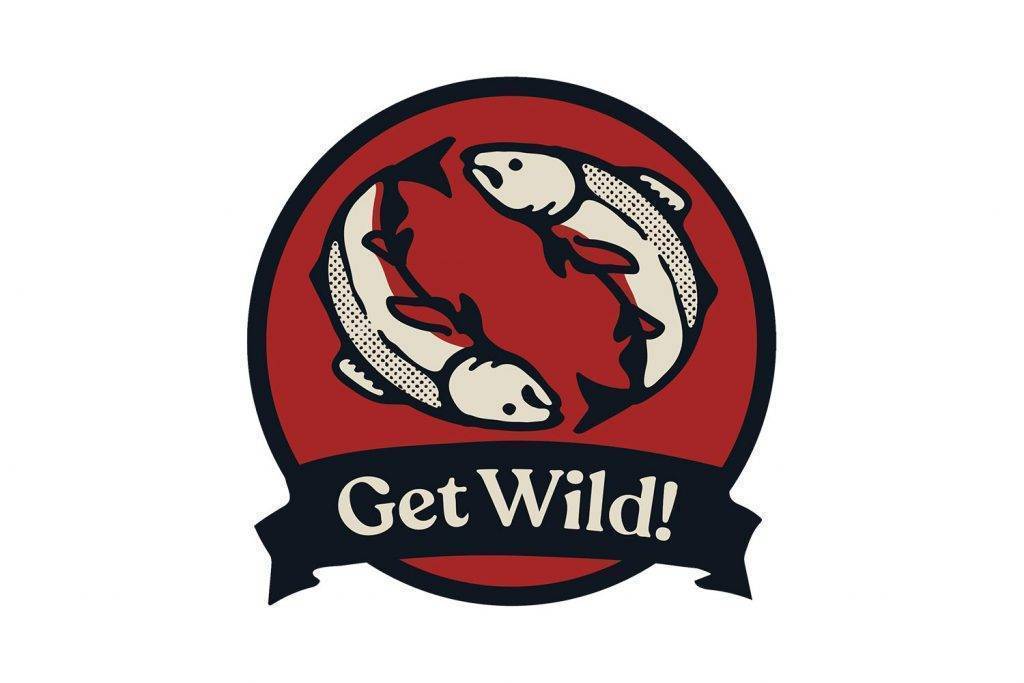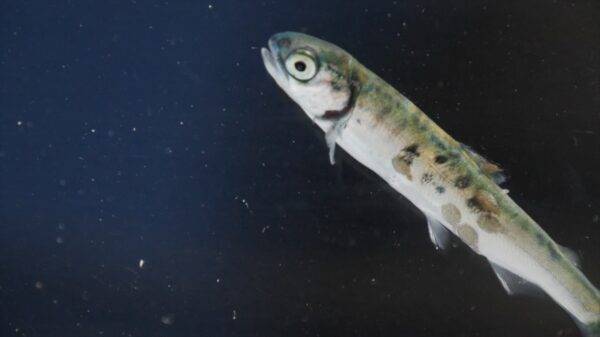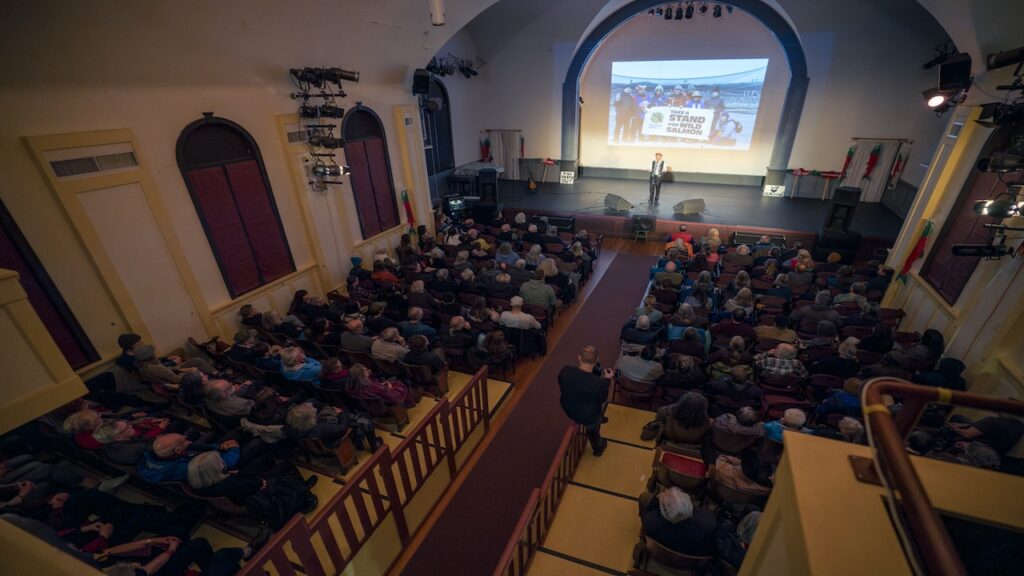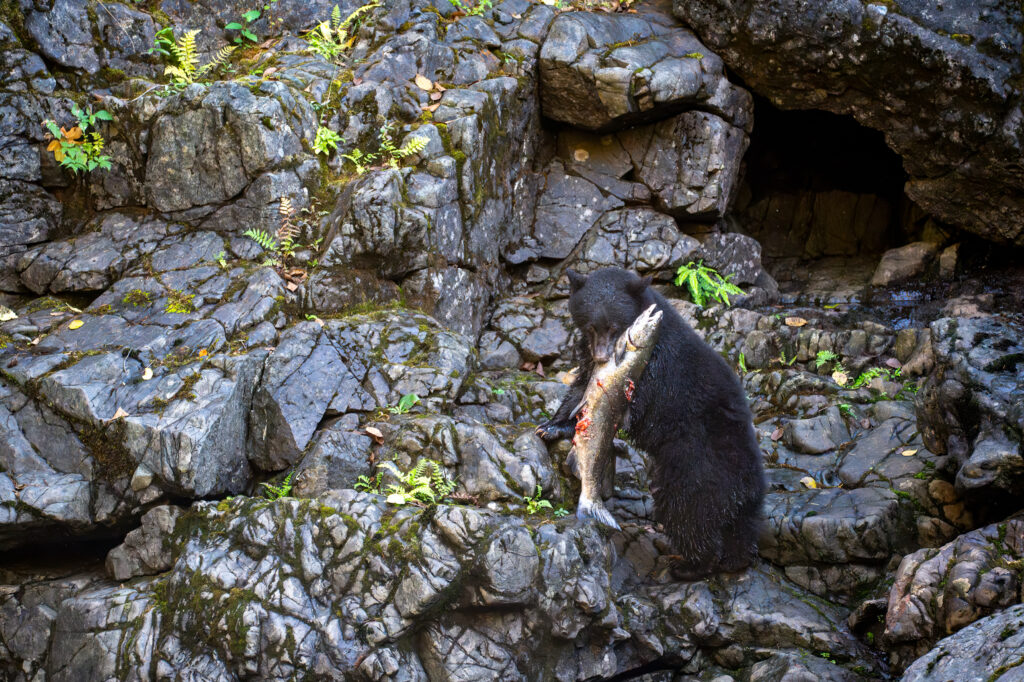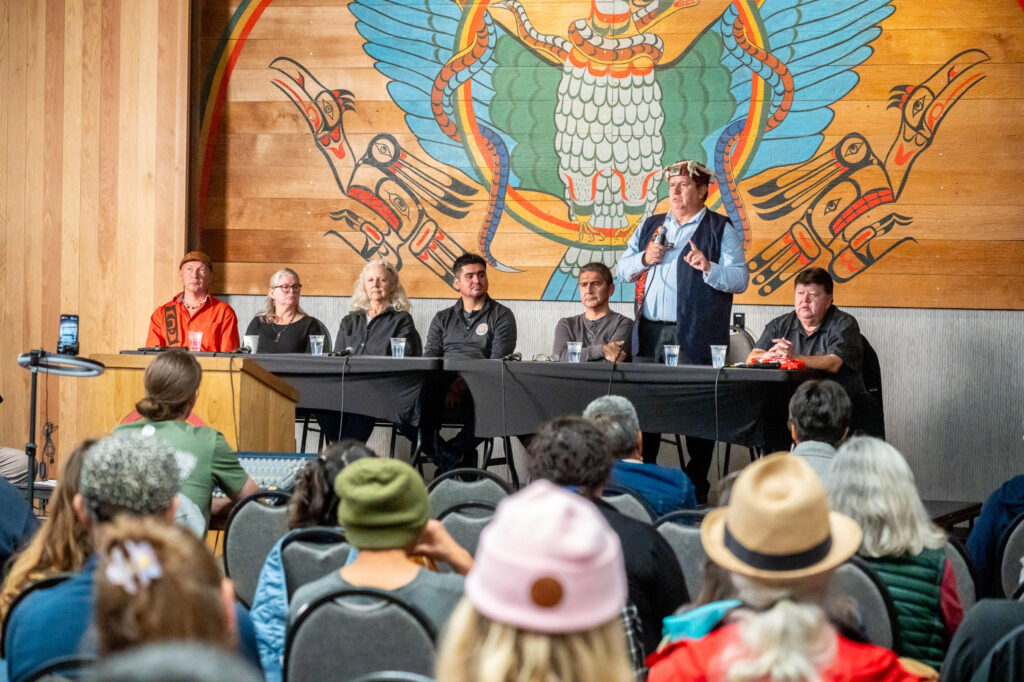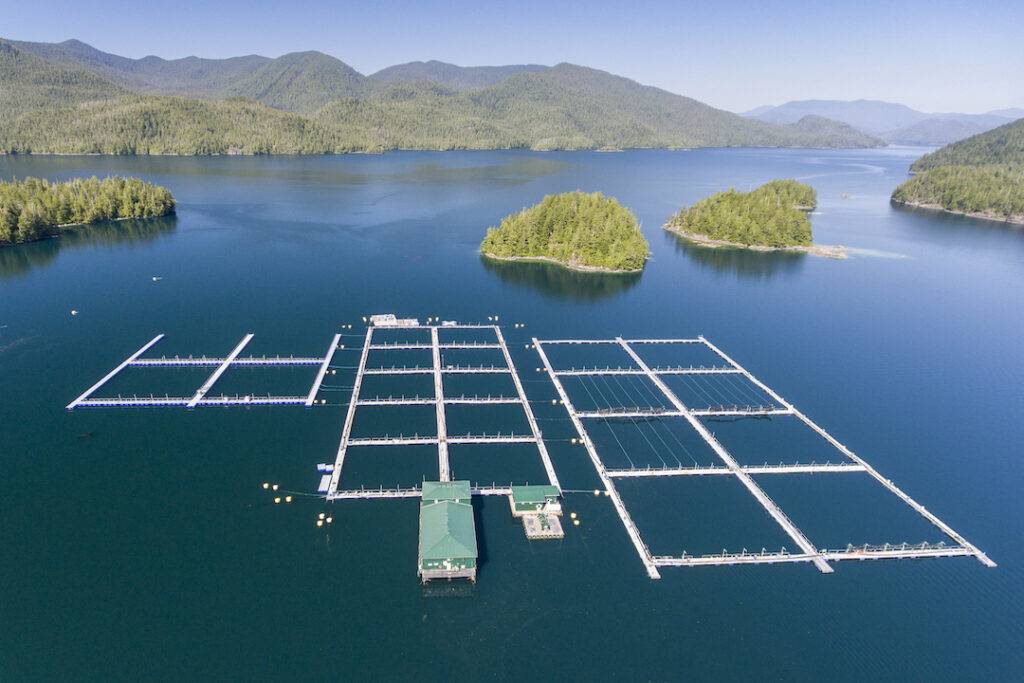A massive outbreak of salmon lice in the Clayoquot Sound UNESCO Biosphere Reserve is threatening to wipe out this year’s salmon runs. Cermaq’s documentation on salmon lice for April show that the numbers of salmon lice on seven of their fourteen Clayoquot farm sites are up to ten times higher than the threshold which requires treatment. The regulatory threshold is three motile salmon lice per farm fish.
There are 20 open net-pen salmon farms in Clayoquot Sound, all located on wild salmon migration routes. The salmon lice outbreak is occurring as wild salmon smolts are leaving Clayoquot’s rivers to begin their life at sea.
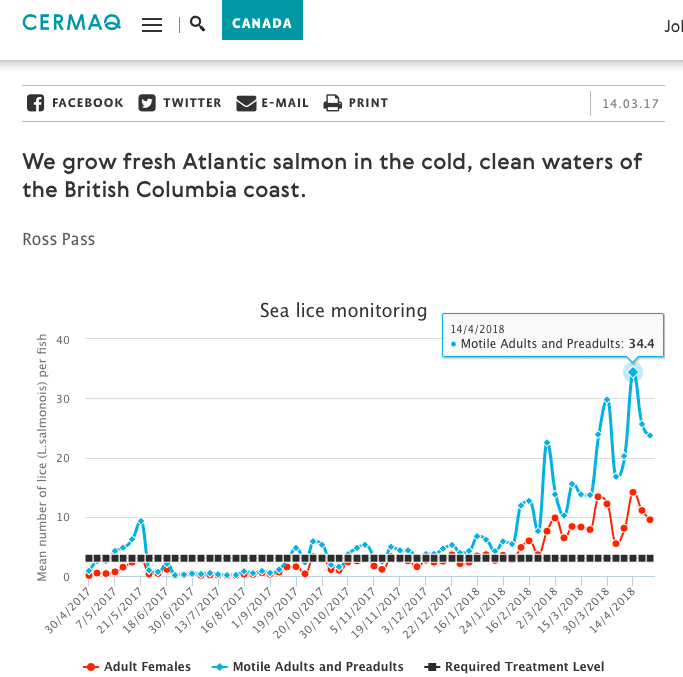
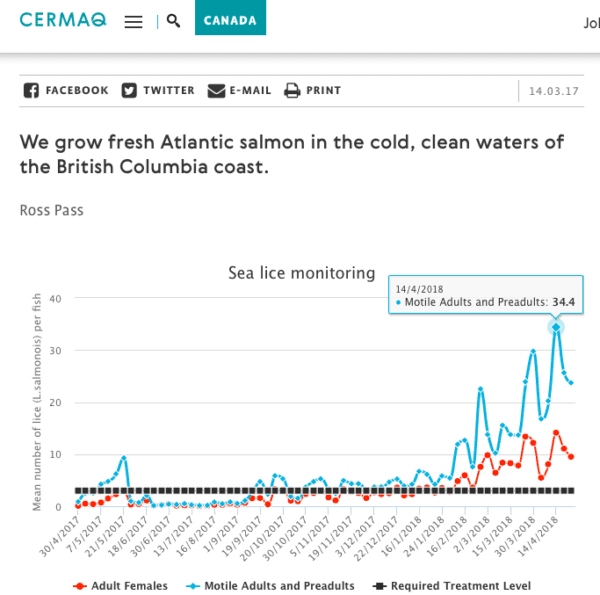
This outbreak is an environmental disaster
Salmon lice are small parasitic crustaceans that feed on the skin and mucous of fish. Research shows wild salmon populations are at risk from salmon lice coming from farms. Open net-pen farms are crowded with up to half a million salmon, making an ideal breeding ground for disease and parasites such as salmon lice. This drastically increases the number of lice in surrounding waters.
Without salmon farms, wild salmon would not encounter salmon lice until they are adults, big enough to handle them. Juvenile salmon can only carry a load of one louse per gram of body weight—even two lice per smolt is a lethal load.
This outbreak is an environmental disaster. Wild juvenile salmon sampled this month are carrying lethal loads of salmon lice. These fish have been given a death sentence—studies show there is no way these fish will survive to spawn and reproduce.
Cermaq unable to control salmon lice
Cermaq recently received a controversial permit to use a new pesticide to control salmon lice in Clayoquot Sound. The treatment—Paramove 50—is known to suppress the immune system of the farm fish and trigger outbreaks of viruses such as Piscine Reovirus (PRV).
Salmon lice continue to plague the salmon farming industry globally. The chemical treatments Cermaq plans have not solved the salmon lice problem anywhere in the world. Salmon lice quickly become resistance to new treatment methods.
The Clayoquot Sound UNESCO Biosphere Reserve is renowned for its pristine rainforest valleys which provide prime salmon habitat. However, in recent years the salmon of the region have been in drastic decline. For example, the Kennedy River saw no sockeye spawners return last fall.
Clayoquot Sound’s wild salmon economy needs to be nurtured and grown to bring abundance to communities, not only human, but natural as well. Monumental cedars, bears, wolves, eagles and over 200 species depend directly on wild salmon.
Clayoquot Action continues to advocate for the removal of open-net pen salmon farms from BC waters and for the provincial and federal governments to take immediate action to support the transition of workers and communities out of this polluting industry.
Bonny Glambeck is Campaigns Director for Clayoquot Action.
May, 2018 Clayoquot juvenile chum salmon photo and video by Alexandra Morton.


